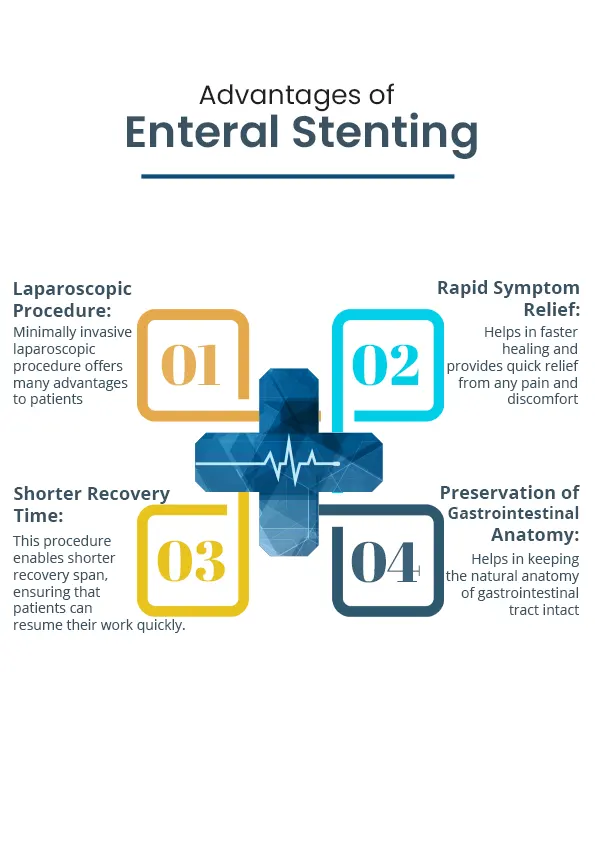Endoscopic Intervention
What Is Enteral Stenting
A popular medical procedure performed by expert gastroenterologists to treat any obstructions or strictures present in the GI tract. This obstruction can also be present in the esophagus, stomach and small intestine. This is a highly effective and well-tolerated treatment option for patients providing fast relief from any discomfort and involves shorter recovery span.
Why Is Enteral Stenting Performed?
- Fast Relief from GI Obstruction: Doctors perform this treatment for fast relief and restore gastrointestinal functionality in patients with obstructive lesions or strictures, which are mostly caused caused by cancer, inflammation, or scarring.
- Better Functioning: The procedure aims to improve patients’ quality of life and imparts fast relief from symptoms like abdominal pain, nausea, vomiting, bloating, and difficulty swallowing or passing stool.
- Best for Palliative Treatment: Highly effective palliative treatment option for patients with advanced gastrointestinal malignancies.
- No Risk for Complication: By promoting the smooth passage of food, fluids, and stool through the gastrointestinal tract, enteral stenting helps prevent complications such as bowel obstruction, perforation, and malnutrition.
- Replacement of Surgery: Highly considered as an alternative to surgery for patients having poor overall health, advanced age, or significant comorbidities.
Advantages of Enteral Stenting
- Laparoscopic Procedure:Enteral stenting is a laparoscopic procedure that can be performed endoscopically or radiologically, typically under sedation or local anesthesia, reducing the need for open surgery and associated risks.
- Rapid Symptom Relief:Enteral stenting provides rapid symptom relief, with many patients experiencing improvement in symptoms shortly after the procedure, such as relief from pain, nausea, and vomiting.
- Shorter Recovery Time: Compared to surgical interventions, enteral stenting results in faster recovery times leading to shorter hospital stay periods, allowing them to resume normal activities sooner.
- Preservation of Gastrointestinal Anatomy:Enteral stenting preserves the natural anatomy of the GI tract, avoiding the need for resection or diversion of bowel segments, leading to long-term complications such as malabsorption or short bowel syndrome.
- Modifying Approach: Enteral stenting can be customized to each patient’s specific needs, with the ability to select stent size, length, and configuration to accommodate the location and extent of the obstruction or stricture.
- Improvement in Nutritional Status: It helps in facilitating the passage of food and fluids, enteral stenting helps improve patients’ nutritional status, preventing malnutrition, and promoting overall well-being.


